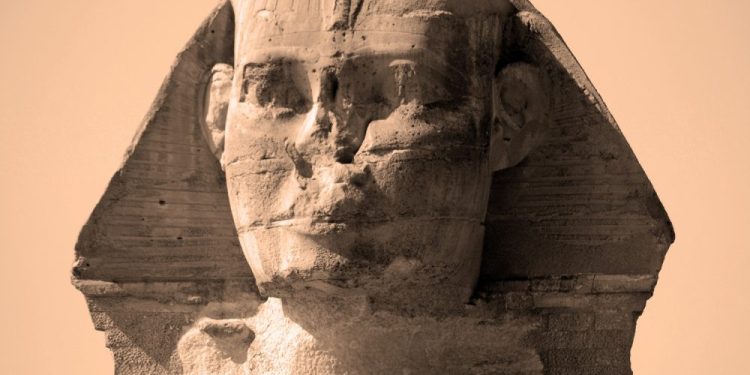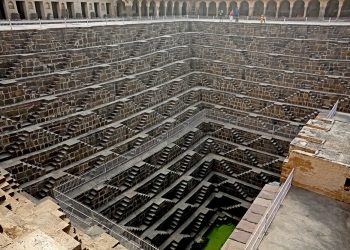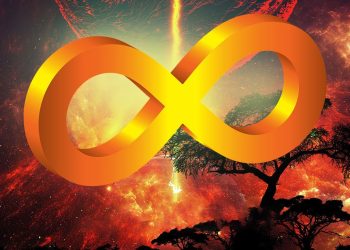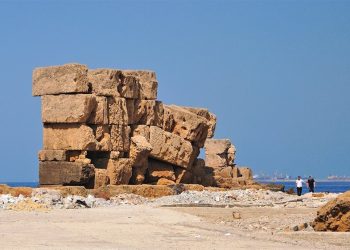The enigmatic Great Sphinx of Giza has sparked a wealth of speculation concerning its age, its creators, and its original meaning. In the last couple of years, many writers have postulated theories indicating that the Sphinx is a remnant of an advanced ancient civilization, most likely lost to archaeology, that existed between 9,000 to 12,000 years ago. Certain Egyptologists maintain that Khufu built the Sphinx and his face on the massive lion’s body. But this may not be correct, and the evidence is right there, on the Giza plateau where the three main pyramids stand imposingly.
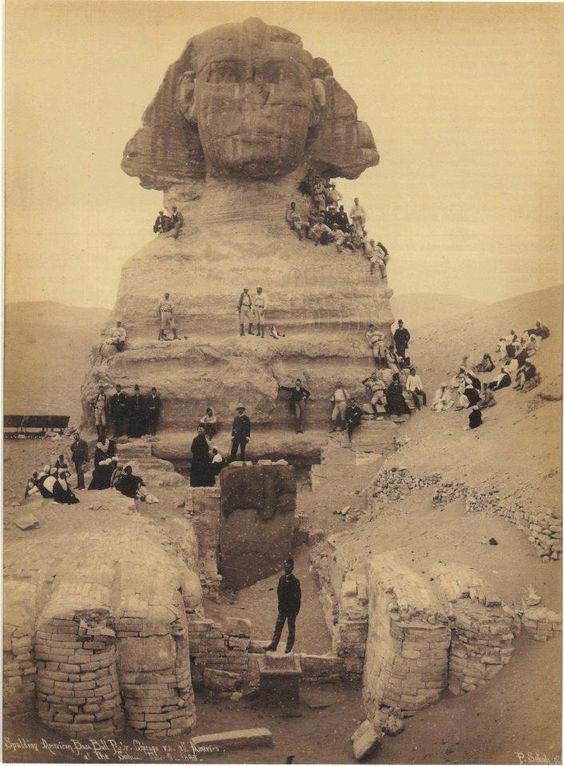
From there, archeological missions have recovered solid architectural evidence that matches the Sphinx and its temple to the final building phase of the Khafre Pyramid complex. In other words, the Sphinx and the Valley Temple, and the Sphinx Temple were most likely built as a singular project right after the pyramid of Khafre was completed.
Carving the Sphinx
Lehner explains in a paper that to carve the Sphinx, the ancient builders formed a U-shaped ditch, eventually freeing a massive stone from which they carved the Sphinx. The resulting stones were used in the cores of the adjacent Sphinx and Valley temples’ walls. Geological evidence indicates that the Great Sphinx was carved directly from the natural limestone of the Mokkatam Formation.
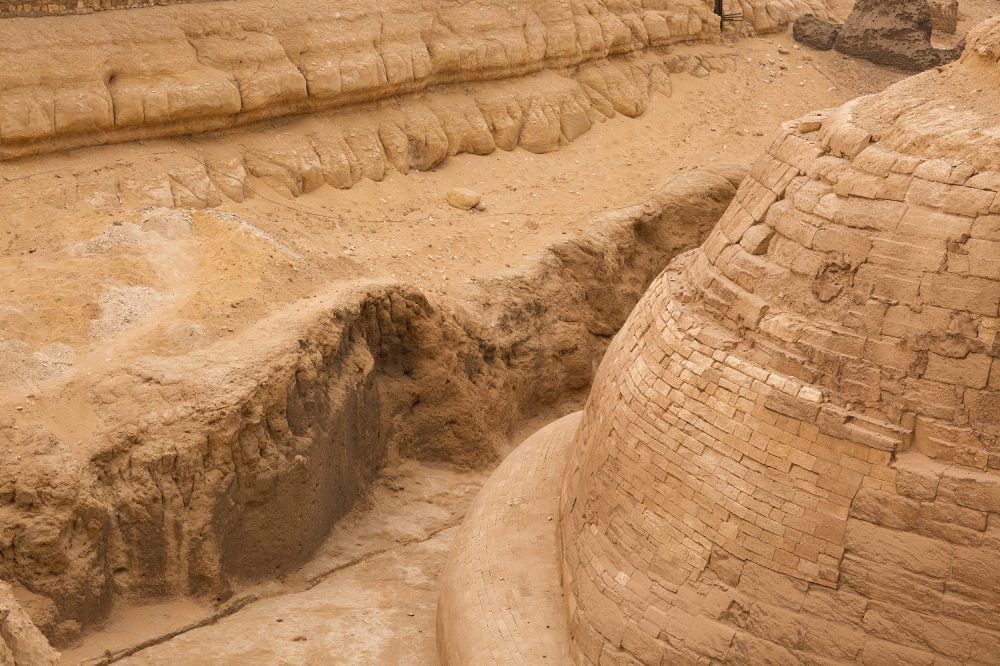
The Mokkatarn limestone, which provided the builders with most of the stone used in the pyramid-building process, resulted from a sedimentation process some fifty million years ago. To free the massive block of stone that would later make up the Sphinx body, the ancient quarrymen had to dig deep into the lower layers of the surface.
This process resulted in the block of stone oriented East to West, residing inside a ditch with an entrance opened to the east, where the builders had already cut out a terrace. South of there sits the Khafre Valley temple.
As noted by archeologist Mark Lehner, there’s crystal clear evidence that indicates how the Sphinx, the Sphinx Temple, and the Valley Temple were all carved during a continuous construction process during the 4th Dynasty of Egypt.
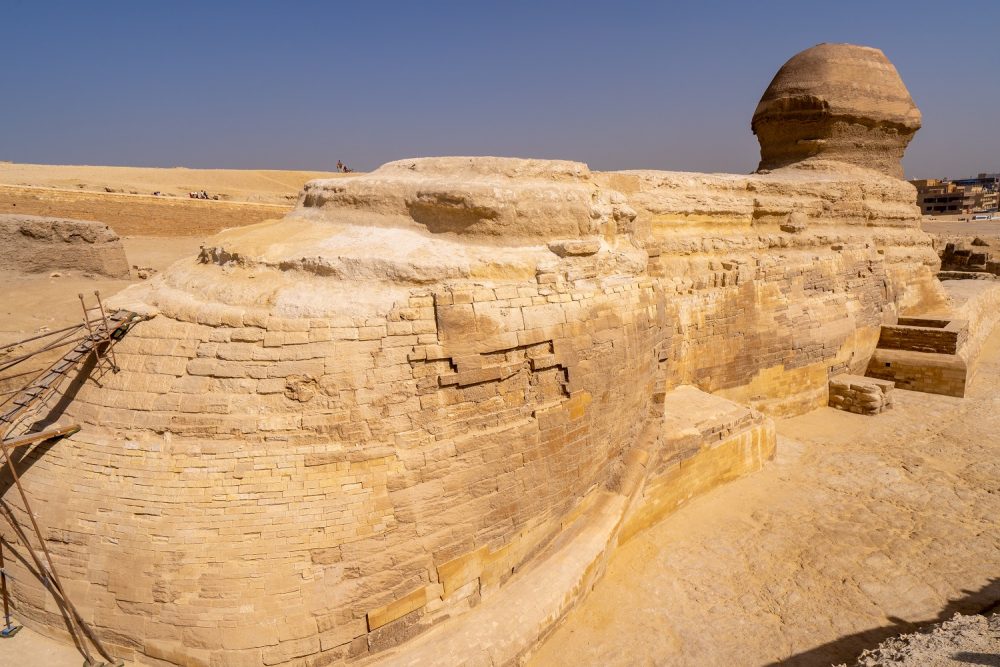
But this isn’t a new theory, as it had already been proposed as early as 1910, when the Sphinx temple was still not excavated, lying under 15 meters of accumulated debris. Back then, Uvo Holscher, the excavator of the Khafre pyramid temples, noted that the Sphinx and Valley Temple were built simultaneously.
In a detailed study of the Sphinx Temple between 1967 and 1970, Swiss architect-Egyptologist, Herbert Ricke suggested that the Sphinx, the temple, and the Valley Temple were created as part of the same quarry and construction process. This was confirmed in 1980 by Thomas Aigner, a geologist from the University of Tubingen, who studied the geological layers in the Sphinx and each of the 173 core blocks in the Sphinx Temple.
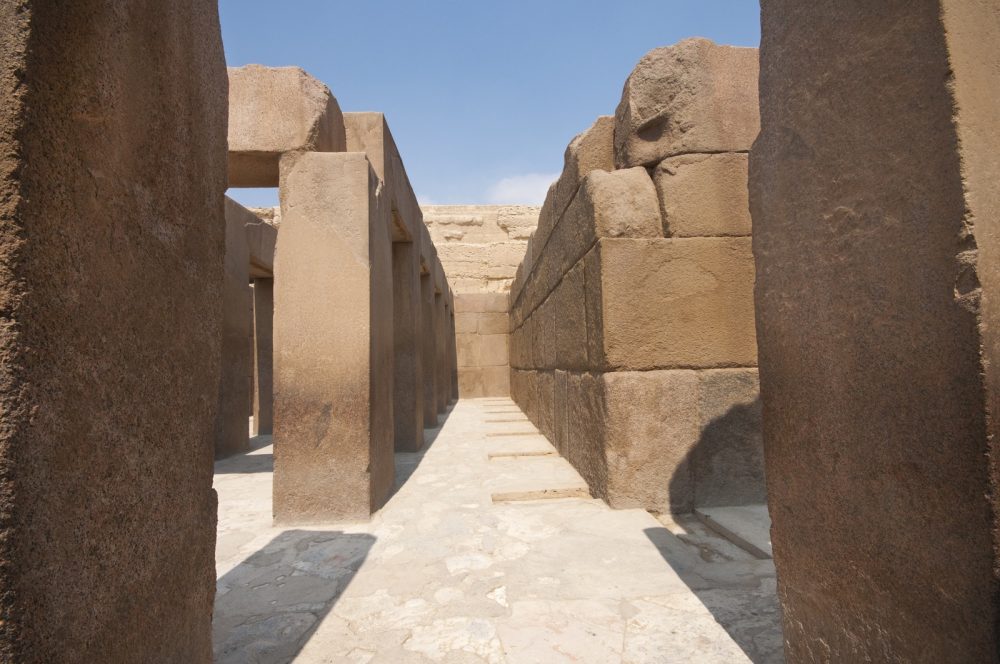
The unfinished Sphinx Temple
The Sphinx temple was built onto a wide terrace that was carved around eight feet lower than the original base of the Sphinx. The temple was constructed using the same block of limestone as the Sphinx and the Valley Temple.
Archeological evidence has suggested a similarity in the layout between the Sphinx Temple and Khafre’s mortuary temple, which some scholars interpret as a telltale sign that Khafre commissioned both. A comprehensive geological study of the sphinx and its nearby temples has unveiled that the massive blocks of stone used to construct the Valley Temple of Khefren’s complex were most likely quarried from the layers that run through the upper part of the Sphinx.
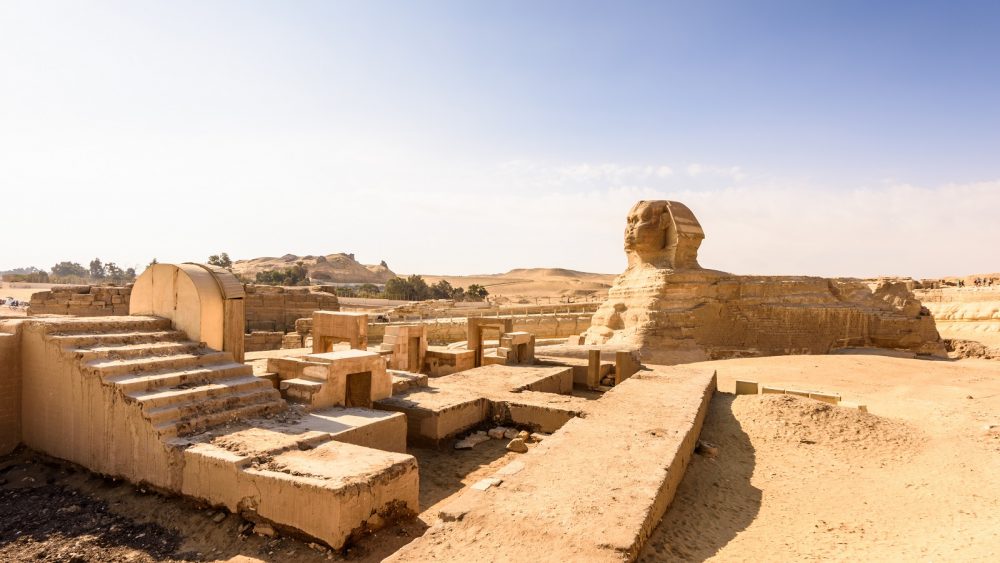
The temple was strangely never finished. Egyptologists have not managed to find a single title of a priest or priestesses that belonged to the Sphinx Temple. This absence most likely means the temple was never used because its builders left it unfinished. It is believed that the builders planned on covering the outer parts of the temple’s wall in granite, but the building was left unfinished for some reason. Now, all that remains of the temple is the eroded limestone core.
Why they never finished such an important temple remains an enigma. As noted by Lehner, someone stripped the Sphinx temple of its granite casing and alabaster flooring in ancient times. Anyone visiting today can see what the ancient builders achieved in ancient times and how far the project was complete.
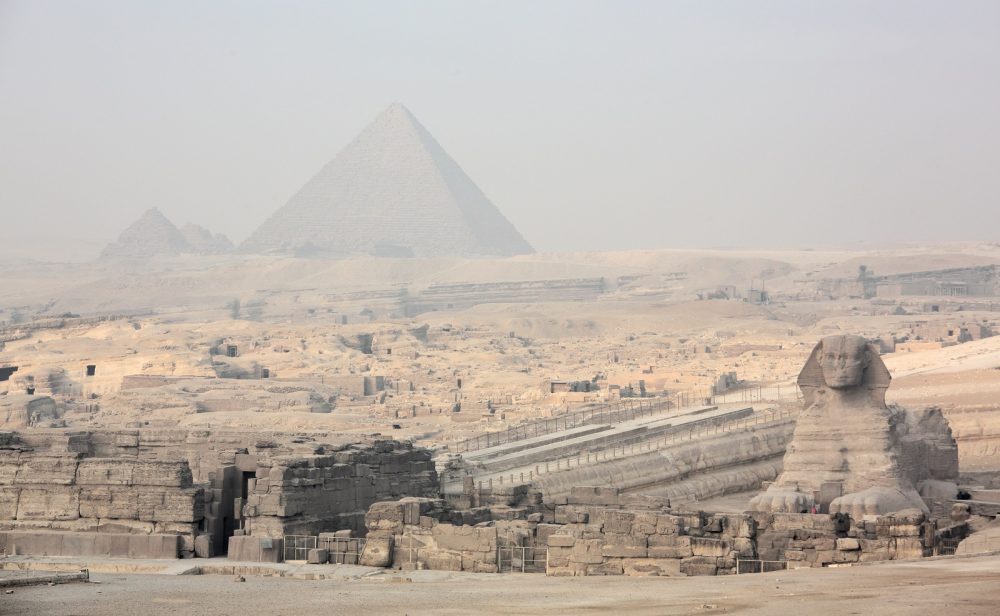
The emplacements for the individual casing stones cut into the floor of the base of the walls are visible today. It was there where the builders had finished covering the gigantic limestone core blocks with red granite casing.
There are also sockets for 24 pillars of the colonnade, each a granite shaft, and for two pillars located just in front of a central sanctuary on both the east and west. The whole composition is believed to reflect the rising and setting sun, and the 24 hours of the day and night. Since the builders only made sockets and cuttings at the time that they set up the granite pillars or casing blocks, these features track how much of the temple they managed to complete before abandoning it. —Mark Lehner.
Ricke had suggested that the builders had completed the temple’s interior and were beginning to work on its exterior when they suddenly abandoned the job. Evidence of that is the cut marks for the granite wall casings stopping just outside the temple entrance doorways.
It is as if, despite being a monumental project, it was abandoned and forgotten.
Unfinished construction site?
But not only was the temple’s construction abandoned. Mark Lehner writes that in 1979 during an archeological mission, he and Zahi Hawass found conclusive evidence that supports the idea that the builders did not finish carving out the ditch surrounding the Sphinx.
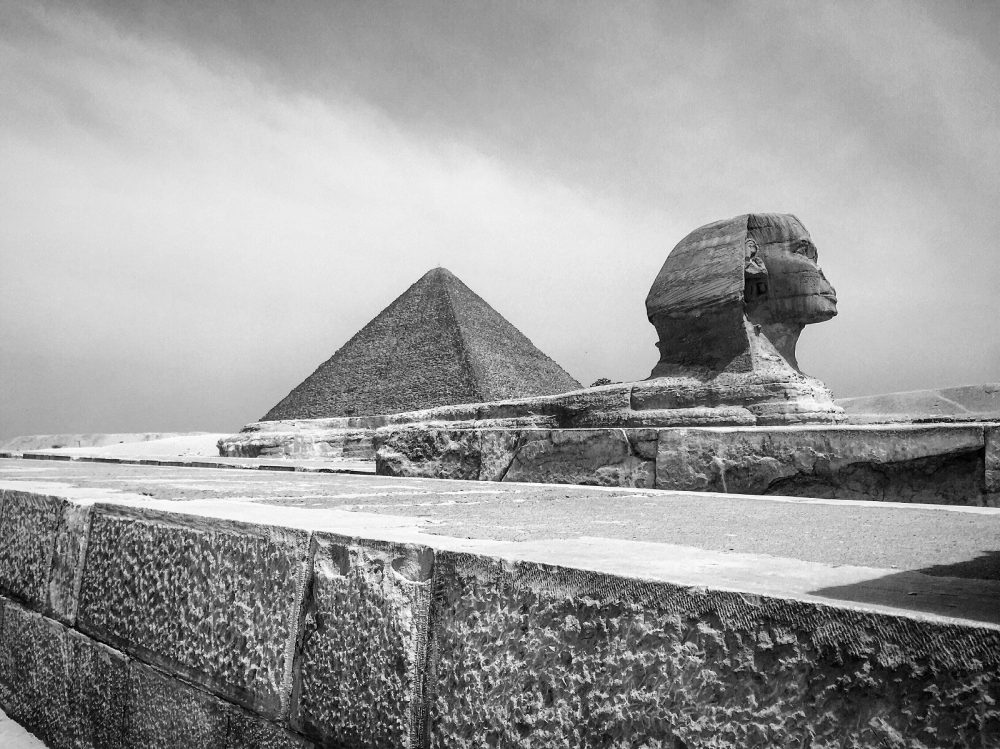
Since the project’s builders cut the temple terrace lower than the Sphinx’s floor, they left a vertical bedrock ledge forming a corridor with the northern wall of the Sphinx Temple. Looking at the rear part of the sphinx ditch, the researchers discovered the unfinished part is a rock shelf of decreasing width.
As they stopped the constitution phase, they left evidence for us to find today. When they stopped work, they left a huge massif of hard Member I (according to geological analysis, the Great Sphinx was carved from strata of Member II of the Mokattam Formation. The Khafre Valley Temple and the Sphinx Temple were built in front of it on a terrace cut out of Member I) rock jutting out to within a few meters from the Sphinx rear.
Cumulative evidence has led Lehner to believe that the Sphinx Temple was the last major left unfinished, just at the end of Khafre’s reign. The fact that the Sphinx ditch and the Temple were left unfinished is itself suggestive that they were the last items under construction in the reign of Khafre.
Would Khafre have erected his beautifully finished Valley Temple smack beside the unfinished Temple and its messy construction yard without cleaning it up? No, the general picture we have salvaged from the large-scale expeditions that cleared out the Sphinx and the two temples suggests that all three monuments originated from the same long-term project.
And that may very well be true, but the issue we are facing here is that no written texts, hieroglyphics, or even symbols may confirm the theories that Khafre commissioned a massive, singular construction resulting in the Sphinx and its accompanying temples.
Join the discussion and participate in awesome giveaways in our mobile Telegram group. Join Curiosmos on Telegram Today. t.me/Curiosmos



